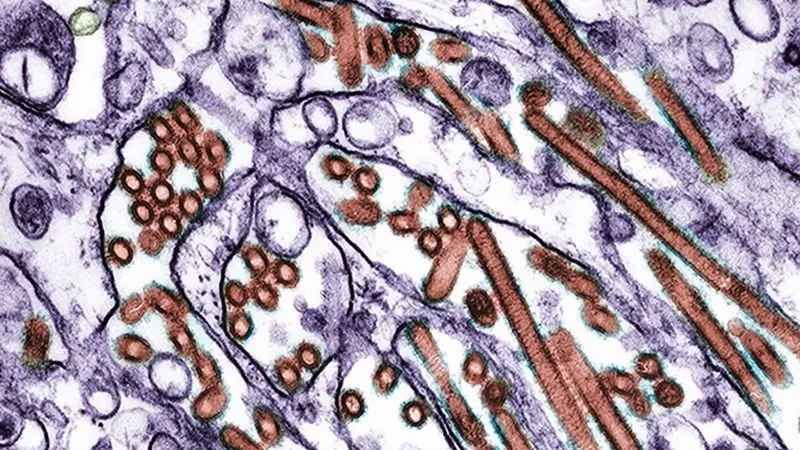
Alarming Discovery: Bird Flu Virus Mutates in Canadian Teen – What It Means for Human Health
2024-11-21
Author: Yan
Introduction
A troubling case has emerged from Vancouver where a teenager has been hospitalized with an avian flu virus that is displaying mutations suggesting it may adapt to humans more effectively. Despite the identified mutations, health officials, including Dr. Bonnie Henry, British Columbia's provincial health officer, have stated there is no current evidence the mutated virus has spread to anyone else after thorough monitoring of the teen’s close contacts.
Serious Implications of Mutations
Scientists, however, are taking this development seriously, as it highlights the potential for the virus to evolve in ways that could enhance its transmissibility among humans. Dr. Jesse Bloom, a computational virologist at the Fred Hutchinson Cancer Center, emphasized that this is one of the first instances showing adaptation mutations in H5N1, the strain responsible for the teen's infection.
Characteristics of the Strain
Interestingly, the strain affecting the patient is not the same as the one spreading among dairy cattle in the U.S., but is more closely related to H5N1 strains circulating in wild birds in the Pacific Northwest. This development raises concerns similar to past viral adaptations seen during the COVID-19 pandemic, reminding us how viruses can evolve significantly.
Investigating the Source
Investigators are still puzzled about how the teen contracted the virus given a lack of reported contact with wild birds. The presence of three key mutations identified in the virus suggests it may be able to attach more easily to human cells. These mutations impact the virus's interaction with sialic acids—sugar molecules on cell surfaces—which differ in abundance between birds and humans.
Implications of Detected Mutations
Dr. Scott Hensley, a microbiologist specializing in influenza, highlighted the importance of the detected mutations. They suggest that the virus is adapting to switch its preference from bird-type sialic acids to the types found in humans. Notably, the teen exhibited early symptoms such as red, inflamed eyes—often a pathway for H5N1 infections—as they progressed to acute respiratory distress syndrome (ARDS).
Need for Caution
It is crucial to note that while these mutations are a significant finding, experts like Hensley are quick to stress that this does not signal the start of a pandemic. The virus's capability for human-to-human transmission is yet to be understood fully. There is an urgent need for further studies to determine whether this virus can transmit effectively in a human population.
Overview of H5N1 Cases in the U.S.
The situation in the U.S. adds to the concern: there have been 53 recorded H5N1 cases in humans, alongside ongoing outbreaks in poultry and dairy cattle, and widespread infections in wild birds. Researchers fear that given the high mutation rate of influenza viruses, the H5N1 strain could still come back stronger if conditions are right for further mutations.
Conclusion
As this situation unfolds, public health officials and scientists are on high alert, underscoring the importance of continued vigilance and research to monitor the virus's evolution. This incident serves as a wake-up call—reminding us that the threat from avian influenza remains real and potentially dangerous.




 Brasil (PT)
Brasil (PT)
 Canada (EN)
Canada (EN)
 Chile (ES)
Chile (ES)
 España (ES)
España (ES)
 France (FR)
France (FR)
 Hong Kong (EN)
Hong Kong (EN)
 Italia (IT)
Italia (IT)
 日本 (JA)
日本 (JA)
 Magyarország (HU)
Magyarország (HU)
 Norge (NO)
Norge (NO)
 Polska (PL)
Polska (PL)
 Schweiz (DE)
Schweiz (DE)
 Singapore (EN)
Singapore (EN)
 Sverige (SV)
Sverige (SV)
 Suomi (FI)
Suomi (FI)
 Türkiye (TR)
Türkiye (TR)